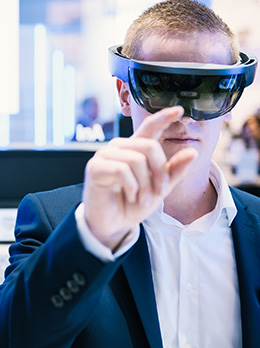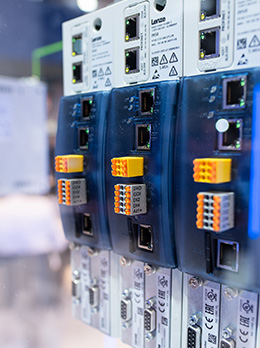From simulation to virtual commissioning
Concrete application possibilities in digital engineering
Whether it's better diagnostics, shorter development times or more precise planning when dimensioning drives: machines can be efficiently implemented using simulation and parallel engineering. The aim is to achieve faster time-to-market and, above all, to avoid cost-intensive rework. This is made possible by interdisciplinary development, in which control and IOT software in particular can be tested and validated on a virtual machine in the early concept and development phases.
Lenze uses well-known simulation tools such as Simulation X (ESI ITI), ISG-virtuos (ISG) and Virtual Techwear (Forward TTC). This supports the complete applications: from simulation, virtual commissioning, virtual training to visualization using augmented & virtual reality.
Sales
- Telephone
- +47 94 85 88 88
- post@norau.no
A simple drive dimensioning for non-linear kinematic applications does not provide a realistic result, which makes a reliable drive dimensioning difficult. Either it is overdimensioned or not suitable for the requirements.
Truly meaningful calculations of torque characteristics can be performed by using a simulation tool. Our solution is a sequential approach:
- Create positioning profiles with PLC Designer
- Calculate torque, actual speed and inertia with Simulation X
- Select the optimal drive design with Drive Solution Designer
Decades of application and drive sizing experience and ready-to-use model libraries help you size correctly.
In the past, training for PLC programmers often took place "on the job" in the field or with simplified prototypes. The decisive cornerstone for virtual programmer training is 3D modeling, which provides a general model of a machine. On this basis, the HMI can already be developed, and simpler diagnostics of complex machines also emerge from this.
Our solution is PLC programming training with 3D Virtual Teachware, which allows to observe the sequence, mode switching, troubleshooting and behavior of axis parameters. The 3D models are created as web applications in the Unity software environment.
The moment when the complete software of a new machine can be tested is usually during commissioning on the real machine. If errors have crept in, they can only be corrected with a great deal of effort. Virtual commissioning with the help of a 3D model can significantly reduce the engineering effort. Concrete statements can already be made about the behavior of the machine, such as the throughput to be achieved during operation. If the model is adapted to the specific machine in even greater detail, it can be used to simulate not only the mechanical behavior, but also the entire manufacturing process on the machine, i.e. including the machine's logics, error management, mode changes and parameterization. At this stage of development, even virtual commissioning of the machine is then possible.
Our offer is a scalable approach: Depending on the application, we support you in designing an interface to our automation platform, in realizing behavior models of automation components or in creating virtual commissioning system topologie.



